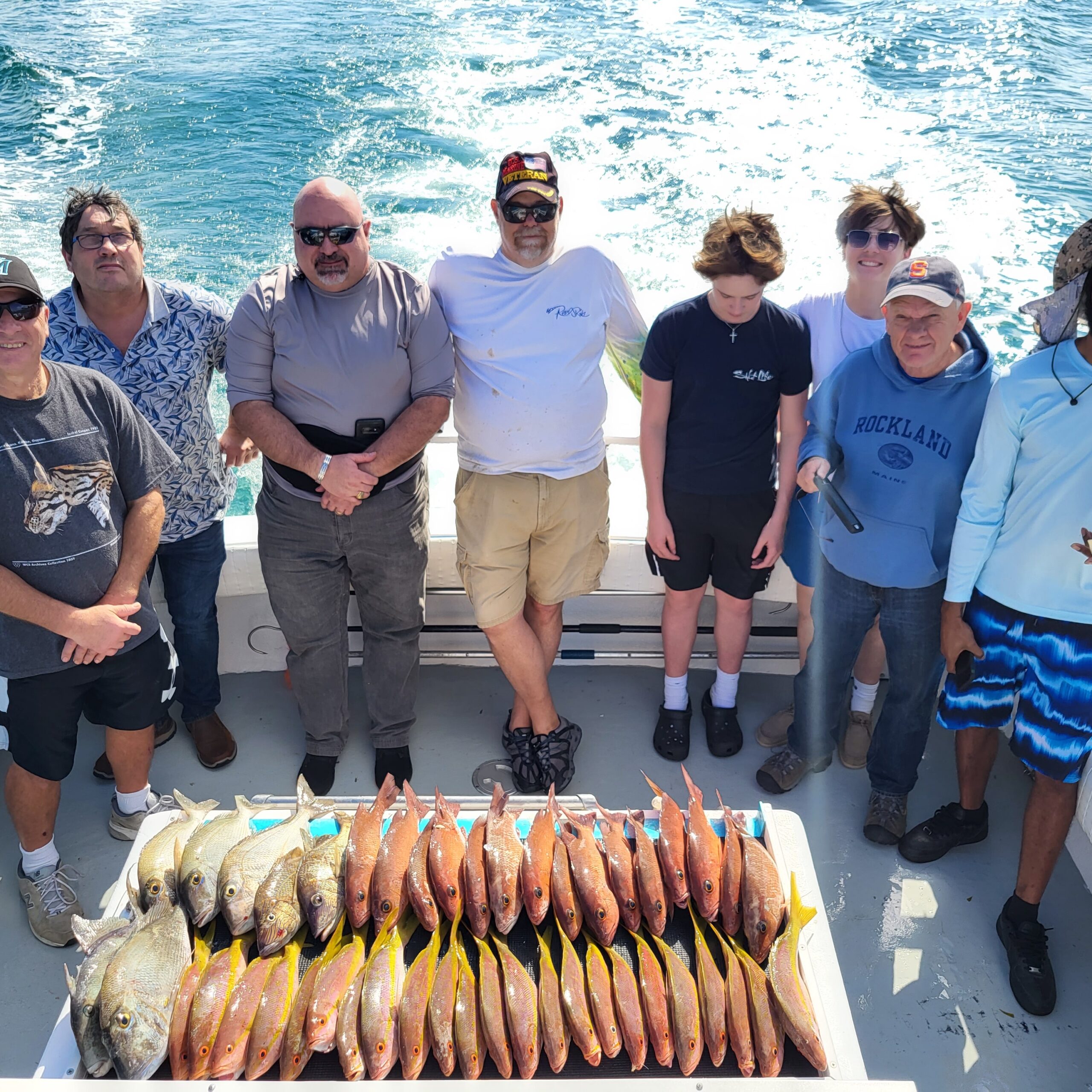
By Nathan Benson
Special Thanks to ESPNOutdoors.com
June 11,2010
Spring is in the air. OK, so we’re actually well into spring technically, but that uncharacteristically long, cold winter made one wonder if it would ever get here. But now we’re in the midst of it, made obvious by the warmer, longer days, blossoming flowers and four and a half months of the NBA playoffs.
Spring is in the air, and so are the dolphin. And for saltwater anglers, perhaps there’s no better way to ring in the season than the sight of a dolphin thrashing out of deep blue waves and going airborne at the end of your line. And maybe there’s no better way to catch dolphin (or mahi-mahi or dorado, if you prefer) this time of year than by going offshore and throwing a knocker rig.

A simple rig consisting of a triple-hook setup with a single, light egg weight riding freely above the knot on a 2- to 3-foot leader, the knocker rig is a popular and economical way to target active species this time of year — fish like dolphin, kingfish and cobia.
“It’s a great way to cover a lot of water on the cheap,” says Capt. Lee Egan of Sea Horse Fishing Adventures in Riviera Beach, Fla., who considers the knocker rig his go-to technique this time of year. “It’s a lot of fun, and it’s a real easy, ‘weekend warrior’ tactic.” And because you don’t need to troll all day, you won’t use a lot of gas; all you need is good current.
The best place to set up and get started is where “the current is roaring,” says Egan, which is offshore in anywhere from 100 to 300 feet of water. Look for the hard blue line in the water separating the churned-up murky stuff from the beautiful blue stuff. Ideal conditions for the technique are some wind and a bit of chop on the water. But while choppy is ideal, it’s not absolutely necessary.
What is key to this technique, however, is chum. “We chum like crazy,” says Egan, “with one bag in the front of the boat and another in the back.”
As the boat drifts in the current, this creates a large chum slick that spreads out from the boat. The idea is then to have multiple baits out in the slick, moving along with it. Keeping a thumb on the spool, pull a length of line out with your other hand, every five to ten seconds or so, just from the reel to the first guide. This paces your bait with the chum, while the current keeps the boat moving and continuously spreads the chum slick. “You’re basically slow trolling with dead bait,” says Egan. “The key is to not outpace the chum; you need to keep your bait right in it.”
Though it may sound light, the knocker rig is fished with a 1/8-, 1/4- or 1/2-ounce weight, just enough to descend your bait to the desired level in the water column. “If the water’s murky, you can get away with 60-pound-test leaders,” says Egan. “But in clear water, you need to go with 30-pound test.”

For gear, Egan uses custom 7-foot rods paired with Shimano TLD Star 20/40 reels. And for hooks, he recommends a 4/0 offset Mustad beak hook.
Different lines can be put out with different weight sizes at various depths to determine where the fish are feeding. Once the proper size is established, throw your bait in the water and start manually peeling out line; your bait will drift with the chum and stay right in the strike zone.
Egan generally fishes with Spanish sardines for bait, but other whole or chunk bait work fine too. And when a dolphin hits your bait, you know about it.
“When he’s really got it, a lot of times he’ll come leaping out of the water,” says Egan. And if you haven’t seen it, a leaping dolphin is a site to behold — a spectacular writhing and dancing of indescribable blues, greens and yellows. And this incredible display is probably the reason so many people panic at this point and make the wrong move.
“When you see a dolphin come out of the water with your bait in its mouth, the worst thing you can do is try to set the hook,” he says. “They need time with the bait. After five seconds or so, just lock the reel and start cranking.”
From there it can quickly turn into a feeding frenzy. Since dolphin are a curious, schooling fish, when one is hooked and fought to the boat, there may suddenly be a whole school of 20 to 30 more circling the boat. “It’s just pandemonium when it gets going,” says Egan.
Before the warm days of spring turn into the dog days of summer, get out and give the knocker rig a try on your next offshore outing.
For more information on fishing with Sea Horse Fishing Adventures, go to www.seahorsefishingadventures.com or call Capt. Lee Egan at 561-254-5124.
©2010 ESPN Internet Ventures.







